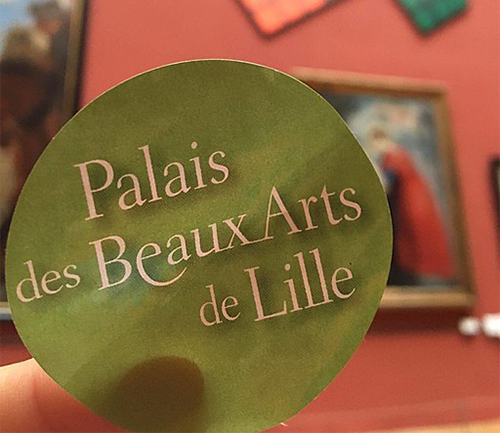Old Masters, New Media
Today's challenge is to desacralize the museum and make it an attractive place that is easy to share on social media. The Palais des Beaux-Arts de Lille called on EDHEC students to help them reach a younger and digitally engaged audience…
How do you overturn 200 years of hushed reverence for classic artworks? In search of a younger, digitally-engaged public, the Lille Palais des Beaux-Arts (Museum of Fine Arts) turned to EDHEC students for a touch of iconoclastic inspiration.

01 Objective
After the French Revolution, a vast amount of art became the property of the people. It became the nation’s heritage, intended to be enjoyed by everyone. The Palais des Beaux-Arts in Lille was just one French musées nationaux created to house these fabulous collections. But more recently, such art galleries have suffered from an elitist image. People feel excluded and simply don’t visit –even though for young people, admission is free. Today’s challenge is to desanctify the museum, to make it a fun place to explore and share on social media.
02 Problem
The same features that make the Palais so majestic also alienate people. The cathedral-like proportions make many visitors feel uncomfortable. As Museum Director Bruno Girveau says: “The museum distanced itself from its visitors by confiscating their voice.” Realizing this unintentional obstacle, he insists the goal now is to empower visitors to actively contribute to the museum’s knowledge. But how? A pioneering project between the museum and Wikimedia encouraged people to create open content, sharing their museum photos online. But uptake was slow, only limited number of pictures have been posted on the WikiMuseum platform within a year. People think taking photos is forbidden – yet with old artworks, it’s okay.
03 Playtime
If nobody dared to break the Museum’s stony silence, would a bunch of EDHEC students? As part as the Entertainment course Marketing Professor and Programme Director of the MSc Marketing Programme Guergana Guintcheva put her students to the test. Thanksto a special arrangement with the Museum, the EDHEC students were given exclusive free access for three hours. The whole incredible site was theirs to explore, unhindered. To put themselves in a visitor’s shoes, interact with the art and each other, to pose with ancient statues or classic oils, to set up fun situations with friends, take selfies, and upload them onto the WikiMuseum platform.
04 Analysis
After galloping through the gallery’s hallowed halls, it was time to let their imaginations run wild. Breaking into groups, the students processed everything they had seen, felt and experienced –then worked on finding creative ways to solve frustrations, and inspire other visitors to do as they had done. This three hour workshop highlighted pain points which they, as young people, felt acutely but which had gone unnoticed by the museum team. For example, to upload their selfies onto Wikimedia was surprisingly onerous. The students declared it should be as quick and easy as any social media channel.
05 Outcomes
Having been briefed by the Museum and Wikimedia, the students became central to a privileged experiment. Indeed they were surprised at the transformation they themselves experienced. Beyond being a classic lecture-room exercise in marketing strategy, they found their own preformed notions being turned upside-down. The solutions they recommended were diverse, some more feasible than others. But among the more useful were suggestions to simplify the process of uploading photos, starting with a simpler flyer. The museum also loved their concept of a real-time wall to display photos as posted.




